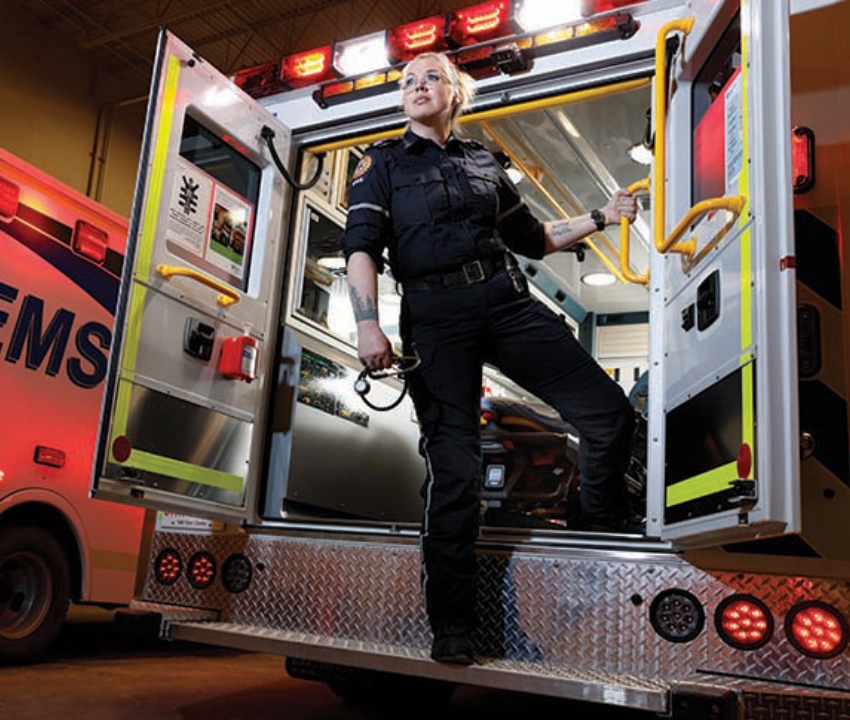Lara Surring (EMT '19, EMMR '17) originally had her sights set on bones — specifically, dinosaur bones.
After finishing her master’s degree in palaeontology at the University of Bristol, Surring was accepted to complete her PhD with internationally renowned palaeontologist and former Royal Tyrrell Museum curator Dr. Philip Currie. She began researching the unique foot construction of the Tyrannosaurus rex, then discovered she was pregnant.
“Pregnancy causes stressful changes in the body, and I was diagnosed with schizophrenia,” Surring says. “It’s an illness that makes it hard to concentrate and think clearly, so I had to quit my PhD.”
Surring found herself in and out of mental health hospitals for several years while she worked to manage her condition. During those years, Surring remembers, paramedics helping her get to hospital also helped navigate her situation.
“I realized that if I got well enough, I’d like to go into emergency medical services and give back some of the help that was given to me,” Surring says.
Surring followed through on that plan. She graduated from what is now called the Primary Care Paramedic program, and works in Alberta’s Emergency Medical Services and in an EMS Peer Support role.
“When I began my paramedic studies, my doctor didn’t know if I could do it because I was severely affected by my disability,” Surring says. “It was graduating from SAIT that started me down this path of learning how to make goals achievable despite big challenges.”
Surring even turned her attention back to palaeontology. In November 2022, she was the lead author on a research paper published in the journal Vertebrate Anatomy Morphology Palaeontology. She says the key to achieving this goal was recognizing her personal limitations, and accepting the help and understanding of her co-authors including Currie, Dr. Eric Snively (Oklahoma State University College of Osteopathic Medicine) and Dr. Thomas R. Holtz Jr. (Department of Geology, University of Maryland).
Surring developed the initial study concept which included using a scanning electron microscope, leading to findings that could support future research into understanding injuries and aging in human biomechanics.
“Being able to publish this paper took well over 10 years. It showed me that, even though you start one path that you’re really focused on and you love it, you might run into a roadblock,” Surring says. “But I’ve found you really can do anything you put your mind to, even if you have a severe disability. Now, nothing seems too big.”

Oki, Âba wathtech, Danit'ada, Tawnshi, Hello.
SAIT is located on the traditional territories of the Niitsitapi (Blackfoot) and the people of Treaty 7 which includes the Siksika, the Piikani, the Kainai, the Tsuut’ina and the Îyârhe Nakoda of Bearspaw, Chiniki and Goodstoney.
We are situated in an area the Blackfoot tribes traditionally called Moh’kinsstis, where the Bow River meets the Elbow River. We now call it the city of Calgary, which is also home to the Métis Nation of Alberta.
